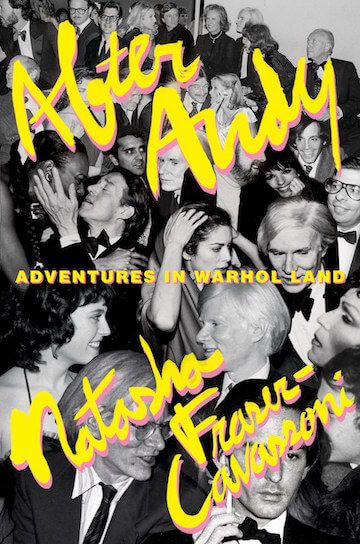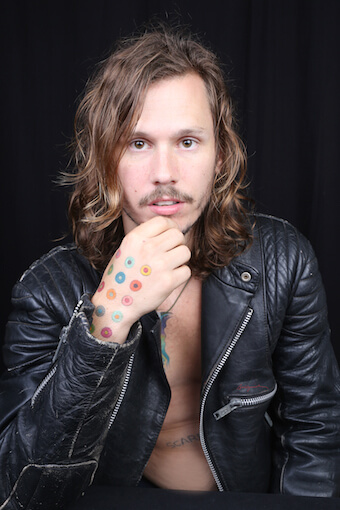Trisha Brown Dance Company performs the premiere of “I’m going to toss my arms –– if you catch them they’re yours.” | LAURENT PHILIPPE
When Merce Cunningham died in 2009, his company set a new precedent for what happens to a single choreographer company when its founder leaves the picture. His company took a final tour, then closed down.
Now, Trisha Brown, who is still very much alive, has decided she will make no more new dances. Because of ill health, she is stepping down as artistic director and, in a model similar to Cunningham’s, will license her works and archive her considerable notes and artwork.
Brown is arguably the inventor of the postmodern style of moving, in which energy impulse generates shape, making pure motion –– rather than movements –– the medium. Her innovation is called “release technique.”
Trisha Brown offers her final new dances at BAM
To kick off its final, three-year tour of theater performances, the Trisha Brown Dance Company presented New York premieres of her last two dances along with some of her classics in a program at BAM's Howard Gilman Opera House January 30 through February 3. After this tour, the plan is for the company to perform only in alternative settings ––museums, galleries, and site-specific locations.
The program also included “Homemade,” one of her oldest dances, and –– on January 31 only – “Set and Reset” (1983), one of her best-known dances.
Also like Cunningham, Brown collaborated with illustrious visual artists and music-makers who enhanced the impact of her dances. For “Set and Reset,” Laurie Anderson created the score “Long Time, No See,” a cacophony of distorted voices and chimes, and Robert Rauschenberg fashioned the visual presentation –– black-and-white news film clips, projected on a trio of geometric solids that rise from the ground and hover above the dancers.
“Set and Reset” is full of Brown’s playfulness, often based on holding a mirror to theatrical conventions. At the start, three dancers carry another one horizontally overhead, as she walks her feet along imaginary walls. The stage’s transparent side legs reveal how offstage helpers support the dancers as they lean in from the wings. Dancers purposely muss up the side legs or grab onto them, as a partner swings them like a gate from one wing to the next.
The onstage traffic also reflects Brown’s witty infatuation with momentum, as an onrushing dancer collides with the outstretched arm of another, doubling herself over in midair. Or a dancer jumps into the arms of another, collapsing both of them to the floor.
The structural conceit of the 1987 “Newark (Niweweorce)” is a continuous duet, done in uncanny unison by Nicholas Strafaccia and Stuart Shugg. Six women –– Cecily Campbell, Tara Lorenzen, Megan Madorin, Leah Morrison, Tamara Riewe, and Jamie Scott –– flit like passing thoughts through a mediating mind, but we never see more than four of them onstage at a time. Periodically, colored backdrops by Donald Judd slowly descend to the floor behind, in front of, or between the moving dancers. Paired with Ken Tabachnick’s sun-drenched lighting, they continually alter the space and our perception of it.
I was sorry to miss the other “last” dance, 2011’s “Les Yeux et l’âme” (“The Eyes and the Soul”), a suite from Jean-Philippe Rameau’s full-length opera “Pygmalion” with costumes by Elizabeth Cannon and lighting by Jennifer Tipton.
The program ended with the whimsically titled premiere “I’m going to toss my arms –– if you catch them they’re yours.” It’s another essay in Trisha’s language of swing, drop, wind, suspend, rebound, and collapse, all done at leisurely speed.
Burt Barr’s visual presentation for “arms” is a dozen giant industrial fans, lined up along stage left. The eight dancers, wearing loose white shirts and pants by Kaye Voyce, are doing a phrase amidst the fans, in and out of sync with each other. Gradually, Neal Beasley travels toward center stage, and the fans blow his shirt off. This wind-blown undressing continues throughout the dance in trios and quartets of men, of women, of both. The gale blows off their whites, revealing the solid color shorts and leotards underneath.
Moment to moment, the dance looks less unconventional in structure than most of Brown’s work, perhaps indicating less hands-on management by Brown and more by Carolyn Lucas, her choreographic assistant, and the highly capable dancers themselves. Alvin Curran, planted unobtrusively at a grand piano upstage, plays his original score “Toss and Find.” Its changing sonic densities add variety to the insistently medium speed of the dancing.
A special treat was original company member Vicky Shick’s performance of “Homemade,” Brown’s 1966 solo for herself. Shick has an 8mm projector strapped to her back, playing a film of her doing the dance. Filming of Shick is by Babette Mangolte, based on Robert Whitman’s original one of Brown. We see fleeting glimpses of the film, as it beams behind Shick. The darting, whipping film image amplifies her slightest changes of facing and the angles of her torso.









